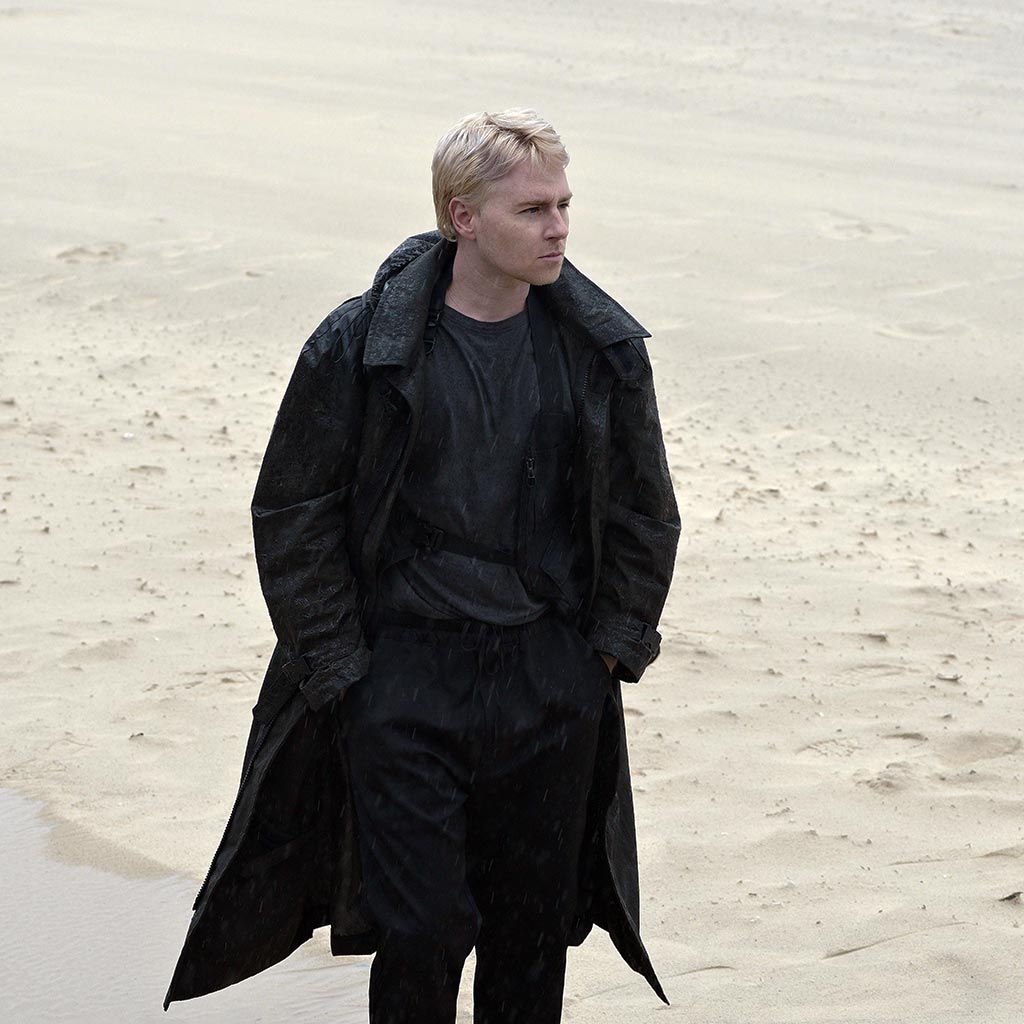Written by: XEONIQ [ Instagram | Tumblr ]
Contents
- Introduction
- Three Arguments on Defining a Cyberpunk Fashion Aesthetic
- Cyberpunk Genre Media: Inspiration for the Aesthetic
- Recurring Components in Cyberpunk Fashion
- Dressing Cyberpunk in 2021
1. Introduction
The cyberpunk fashion aesthetic was once a fairly straightforward “look”, one defined by the imagery and costumes of iconic primary media such as Blade Runner (1982) and Neuromancer (1984). However, as the genre evolved, new influential texts emerged and the collection of titles spawned not only a movement but also an aesthetic subculture, followed eventually by brands who claim inspirations from cyberpunk themes, if not specific films, books or games. This has resulted in an incredibly convoluted aesthetic, one that is hard to concretely define and that is segmented by different periods of time, a range of offline and online contexts, and by various communities who have participated in the scene via vastly different backgrounds.
In order to attempt and create a definition of the cyberpunk fashion aesthetic, I ventured online to challenge my own personal convictions that I’ve formed over the years. I found a range of arguments, some more convincing than others and many where significant overlaps had occurred. Three of the most persuasive singular arguments I encountered are summarised in the section below. If you’d like to get straight to the guide, please skip to Section 4.
If you’d like a refresher on cyberpunk as a sub-genre of science fiction, one of my first articles for Shell Zine is here: Novum, Science Fiction and Cyberpunk Media.
My good friend, Corbin Coffey (YouTube | Instagram), has worked in parallel with me on this project, preparing his own video essay on how cyberpunk influences fashion.
2. Three Arguments on Defining a Cyberpunk Fashion Aesthetic
2.1 Cyberpunk as a Media Inspired Fashion Aesthetic
The Argument:
- Cyberpunk as a style is a fashion aesthetic inspired by costumes and imageries presented in iconic media that fall within the cyberpunk genre.
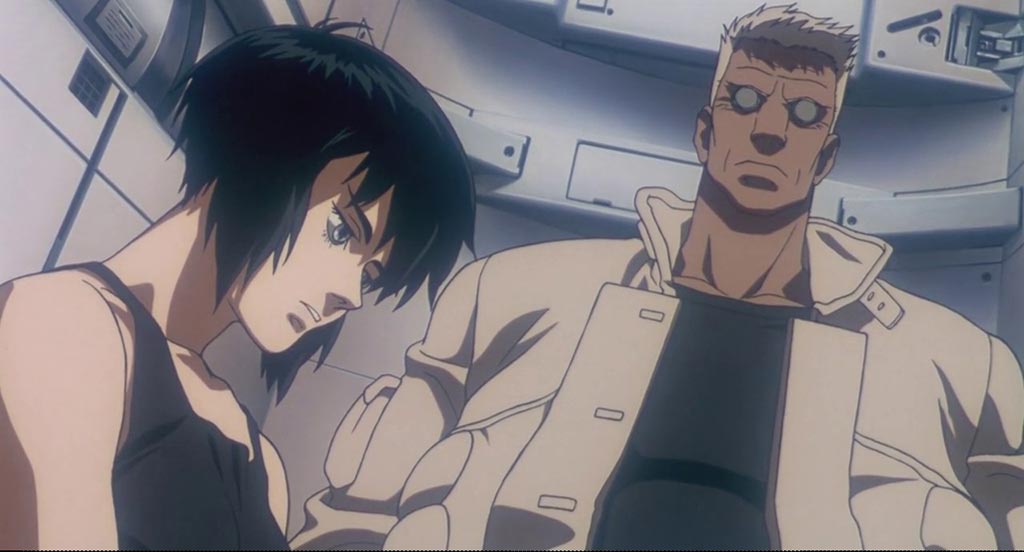
Strengths of this argument:
- There are multitudes of media including literature, film, and games that provide visual and described imageries, which can be deconstructed to create a template for a cyberpunk aesthetic. This data makes for a more aesthetically demarcated model than the other two arguments.
- The fashion displayed in these media are presented in a setting that is distinctly dystopic and futuristic. For those who wish to explore opportunities of dressing for the future today, the use of cyberpunk media provides a considerable amount of context.
- The imagery presented in cyberpunk media is by definition a core representation of the cyberpunk aesthetic. Regardless of whether there is credibility in the other two arguments, looks from iconic films such as Blade Runner (1982) or Ghost in the Shell (1995) are going to elicit aesthetic recognition as “cyberpunk” to a vast majority of people.
- In the 21st Century, particularly in the West, formality and standards of dress have largely been eroded, especially in casual contexts. Film and television have provided fashion inspirations for decades. Wanting to emulate the characters in your favourite media is, in my opinion, a relevant source of inspiration for personal style; or at least no less relevant than every instance in which someone buys a leather jacket after seeing Marlon Brando in The Wild One.
Weaknesses of this argument:
- There are some that would consider cyberpunk a “dead” sub-genre, one that had its heyday in the 1980’s and 1990’s. Modern titles, such as Blade Runner 2049 and Cyberpunk 2077, exist as retro-futurist homages that rehash imagery and tropes from past works; i.e. using only vintage-inspired media as inspiration does not address any evolution in the genre or the aesthetic.
- Cyberpunk in its most influential phase was wrong about many things, particularly how technology evolved. In reality technology has become less about empowering people as individuals and more about controlling, monitoring and standardising consumers to corporate interests. Therefore, if cyberpunk as a genre has become outmoded by our current reality, can it be an inspiration for practical futuristic clothing?
- Companies such as Magnoli Clothiers create close replicas of a number of cyberpunk costume pieces, including Deckard’s Coat. Would wearing these pieces in public not be a directly cyberpunk media-inspired outfit? Yes, but I am sure many in the fashion community would also consider it cosplay. Does that mean that wearing fashion pieces that bear aesthetic similarities to costume pieces is somehow a fashion style just because it is not a replica? It will be a fine line, in my opinion.
2.2 Cyberpunk as a Real Life Sub Culture
The Argument:
- Cyberpunk is a style that is worn by real life cyberpunks, who live by the high-tech-low-life mantra and practice radical anarchism.
- Mondo 2000’s tongue in cheek infographic below provides a surprisingly apt summary of what being a real cyberpunk could entail. On top of the obvious “punk” anarchist base, a clear fetishisation of consumer technologies is evident, combined with a “prepper” or “Every Day Carry” (EDC) mentality where one has a plethora of gear on their person at any one time.

Strengths of this argument:
- The world has changed considerably since the early 1980’s. Technology has shaped society in a way that has not only influenced our behaviours, but also the products and fashions that we use. Cyberpunk is argued by many to be a reality, not just fiction. Thus, it is also implied that there must be real life cyberpunks who exist in a non-fictional setting, and how they dress should be of interest when defining a cyberpunk fashion aesthetic.
- If actual cyberpunks exist – living a life off the grid as a radical with a black market occupation made possible by new, especially computer-assisted and online technologies – then shouldn’t the aesthetics embodied by these people define the 2021 cyberpunk look?
- Nobody likes posers, especially not in the punk scene. A real life cyberpunk anarchist would have significant credibility and their own personal style would legitimise a particular aesthetic.
Weaknesses of this argument:
- Cyber outlaws such as ISIS social media propagandists, Nigerian e-mail scammers and “Black Widows” who use online dating sites to seek their prey are all living high tech, low life lifestyles, but arguably none of these would have personal aesthetics that the average cyberpunk fan would find inspiring. They look to dramatically-clad cyberpunk protagonists such as Agent K, JC Denton, or Major Kusanagi, not to impoverished thieves or political radicals.
- An actual, real-life ideological cyberpunk is going to be a criminal. You cannot express anti-establishment views on the Internet let alone act on them without legal repercussions, given the state of surveillance that has been achieved both offline and online. Thus, actual outlaw cyberpunks are not likely to be wearing any sort of uniform that would identify them as such out of fear of law-enforcement attention.
- How many people involved in cyberpunk as a scene or fandom are actual radicals, living an outlaw lifestyle using their technology to fight the system? Very few I would guess. You do not have to like or even have seen Blade Runner to be an actual black hat hacker or cyber anarchist. This limits the scope of any kind of aesthetic that could be gleamed from a real-life cyberpunk’s look.
2.3 Cyberpunk Today has Evolved to Techwear
The Argument:
- Cyberpunk as a style is dictated by the aesthetics of “techwear” as it is argued that we already live in a dystopia (as loosely predicted in cyberpunk media) and techwear has evolved as a modern, current day application of production and consumer technologies in the clothing and fashion industries.
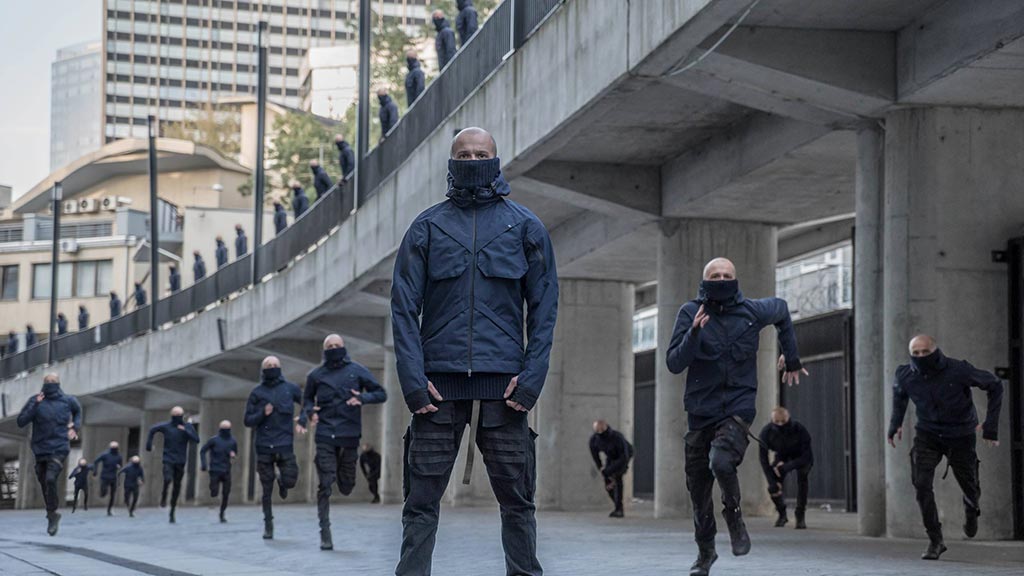
Strengths of this argument:
- While most cyberpunk fans might not have even heard of, much less buy or own any, techwear it appears a large majority of online techwear fans enjoy cyberpunk as a genre or at least a few of its iconic titles. Techwear fans as a movement online can provide inspiration and share practical imagery and information regarding products and brands around the world for free using social media technology. They have displaced corporations as the dominant source of inspiration for their style, something I personally find futuristic if not cyberpunk.
- Techwear is decidedly urban in context and many of its most representative brands and pieces provide weather resistance; and both of these components have strong parallels with the typical cyberpunk setting that is defined by environmental degradation and late stage progression of urbanisation and consumerism.
- There are numerous brands that cite direct cyberpunk influences in their product designs or branding. This lends legitimacy to an overlap of the techwear style with a cyberpunk fashion aeshetic. It should be noted that not all of these brands are marketed as “techwear”: such as Raf Simons’ 2018 Spring Summer men’s line which directly referenced the Blade Runner universe and is decidedly in the high fashion segment rather than the techwear market.
Weaknesses of this argument:
- As per the first strength, techwear fans comprise a minority of cyberpunk fans, and just because they are interested in clothing that they may argue is more “futuristic” than other garments due to technology, does not mean that their movement’s aesthetic would also define cyberpunk’s.
- Techwear is not something new. Brands have been applying advanced garment construction and material technologies to consumer clothing since the 1970’s, if not earlier, predating cyberpunk as a media genre or an aesthetic, and while many modern brands have cyberpunk influences, others such as Lululemon and Outlier do not, and are unarguably popular in the techwear community regardless.
- Top of the line garment manufacturing technology is possessed by large corporations, not small scale “techwear” brands, and the outdoors and performance sports markets are the ones providing actual material and assembly innovation in terms of weight savings, weather-resistance, comfort, and practicality which they then leverage as competitive advantage on large scales. If we are to accept that modern cyberpunk should be defined by the most technologically advanced clothing, then techwear takes a back seat to the majority of multinational outdoors brands such as Arc’teryx and The North Face (TNF). And while TNF FuseForm Gore-Tex shells could be easily incorporated into a techwear outfit, neither the inspiration nor the typical application of these high-performance outdoor pieces are future-oriented or cyberpunk.
- I personally would argue that techwear is more a modus operandi for practical consumption than it is an aesthetic “style”. Techwear at its best is lifestyle appropriate, context considerate, and maximises utility: both practically as garments and socially as fashion. Techwear at its worst is low performance, overpriced streetwear and not an actual marriage of personal preferences and lifestyle practicality. While cyberpunk as a style could easily be applied to a techwear outfit, taking one of the numerous styles that are popular in techwear online and saying it is “cyberpunk” by virtue of it being “techwear” doesn’t work.
2.4 Summary
Each argument above has its strengths and its limitations. None of them are universal or holistic when reflecting on the vast sources of visual and thematic inspiration one would find when searching “cyberpunk fashion”. Perhaps then, any robust model for defining the cyberpunk fashion aesthetic would need to include all three perspectives, and possibly even more. However, for this article I have decided to focus solely on the first argument where a cyberpunk fashion aesthetic is one that can be analysed from existing cyberpunk media sources. I would like to revisit the other two arguments for future articles as I believe that both cyberpunk as an ideology and cyberpunk as techwear (or just cyberpunk-inspired fashion) have their own interesting perspectives that should be explored.
3. Cyberpunk Genre Media: The Inspiration for the Aesthetic
This section introduces a few of the iconic fashion looks derived from various cyberpunk media. For an ever-expanding list of cyberpunk titles see Shellzine’s Cyberpunk Media Index. The looks here will be analysed for aesthetics, form and context to find recurring garments, styling and design components, which will be summarised into a cyberpunk fashion aesthetic model in Section 4.
Firstly, nothing is more iconic in the cyberpunk genre than Rick Deckard’s trench coat worn in Blade Runner (1982). Not only did this film define the visual aesthetic for decades to come, but that coat in particular has been referenced if not directly emulated by countless other cyberpunk titles. In this section I will argue that even the most iconic titles such as Ghost in the Shell (1995) and The Matrix (1999) made heavy use of genre tropes in their costume design and fashions.
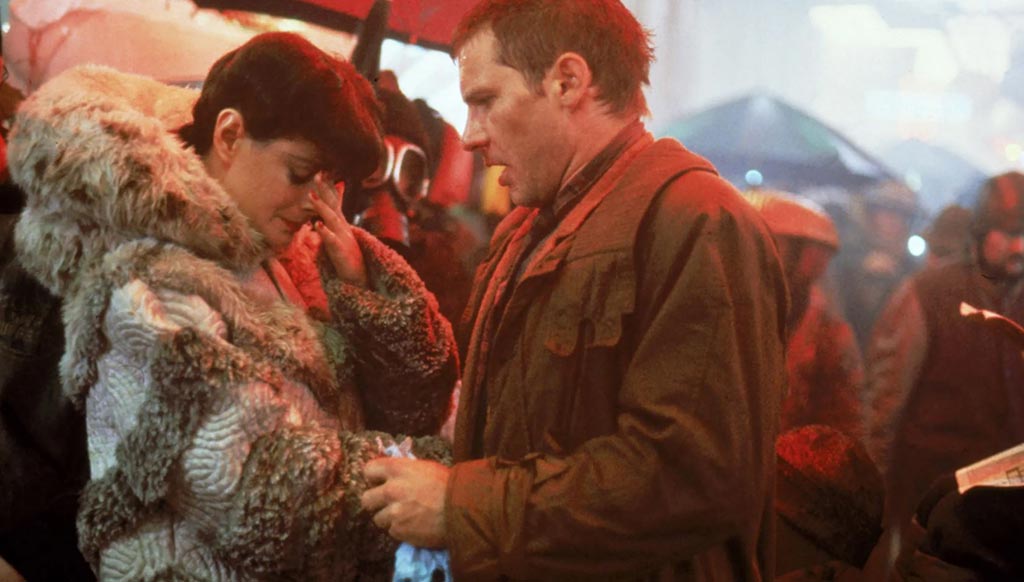
Blade Runner (1982) was a genre-defining movie not just because it was the pioneer, but also due to its exacting attention to detail in sets, props and costumes for world-building. Michael Kaplan, head costume designer alongside Charles Knode for the production, had the following insights to share:
After reading the script, we definitely felt that Blade Runner was of that film noir genre, and we looked back to the films of the 1940s for inspiration. Deckard (Harrison Ford’s character) was as much a Gumshoe as Sam Spade (Humphrey Bogart). For Rachel’s character, our chief inspirations were the tailored suits that Adrian designed in the late 1930s and early 40s. I liked the idea of combining different shades of suiting fabrics to create patterns – something Adrian did. In this case I used amazing vintage suiting woollens in shades of grey and beige, with metallic threads that I was lucky enough to find, which created a subtle luminous quality. I wanted to create a futuristic heroine who was believable in the future, but with her feet firmly planted in film noir past.
Michael Kaplan for AnOther Mag 2012
A key takeaway is the use of subtlety to construct the film’s visual narrative. Minor deviations from the traditional trench can be seen in Deckard’s coat, including twin throat straps and an exaggerated collar with quilted lining. Each character’s costume, aside from Zhora’s rather extroverted ensemble, utilise such subtleties to develop from the film noir base.
While pouring over the costuming and clothing designs in other cyberpunk iconic titles; it became clear that these subtle exaggerations were an important component of the aesthetic. In Johnny Mnemonic (1996), Keanu Reeve’s suit and tie, which would be a fairly boring costume for a science fiction movie in most cases, utilise a sharkskin wool silk texture to provide a metallic sheen, a texture used for Rachel’s costumes in Blade Runner (1982) as well, and further, Johnny’s suit shoulder pads are exaggerated.

Deckard’s blazer and coat were given a threadbare look, both to communicate the retired gumshoe trope and to establish the setting of an Earth in decline. While the costumes in Blade Runner 2049 (2017) were for the most part a disappointment (e.g. Harrison Ford in a t-shirt and jeans), Agent K’s jacket was an excellent example of a costume piece that represented both the realities of the setting and the needs of the character. Just as Deckard’s film noir trench coat was modernised, so too has Agent K’s field jacket, using faux leather and polyester fleece in light of the film’s setting where real animals and their hides had become scarce and to reiterate that Agent K was a low income earning replicant. The exaggerated high collar also provided atmospheric protection, with mixed materials in the outer shell referencing but not completely mimicking the costumes in the original movie. Joi’s look was a much more literal emulation of Zhora’s from the original film; and reinforces the argument that most of the costuming and fashion designs in cyberpunk media are derived from earlier established titles.

Another cyberpunk film that emulates earlier titles in the genre and which used weathering in its costumes to signify a dystopian setting is Hardware (1990). While not a great movie, the costuming utilised so many tropes in pretty much every character’s costume that it served as a good example of a cyberpunk media fashion style. Long duster coats, leather bomber jackets, cargo pants, boots and plenty of tactical accessories: Hardware (1990) uses conventional late 80’s clothing to construct a clearly identifiable cyberpunk look.
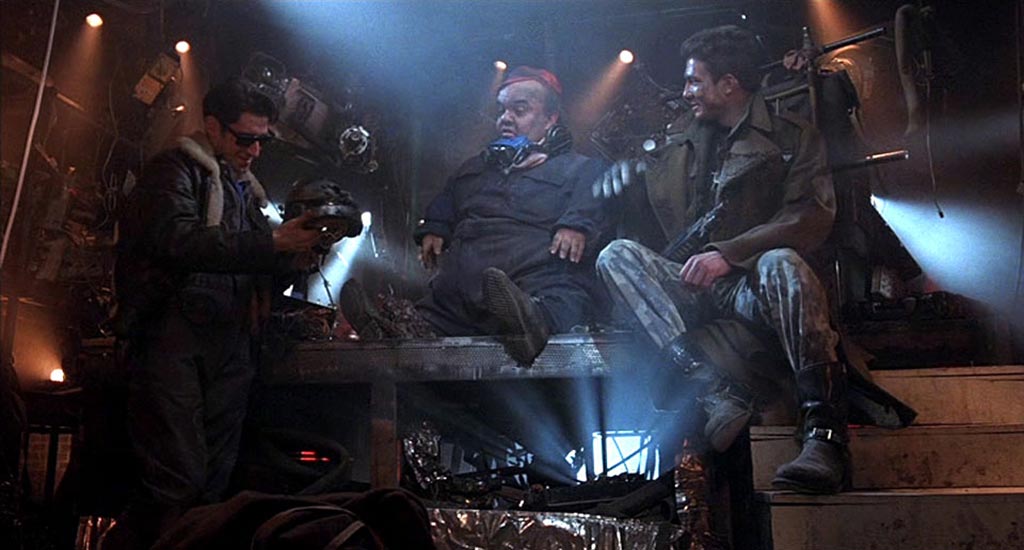
The Matrix trilogy has been significantly influential on the cyberpunk aesthetic due to its popularity, using a wide scope of references for its own costuming. Trinity and her form-fitted latex looks were heavily inspired by the cybergoth music scene of the 1990’s and Liquid Television’s Aeon Flux (1991), a brunt of Neo’s outfits are kung-fu pieces, and Morpheus, below, is in a virtual clone of Rick Deckard’s outfit from Blade Runner (1982) albeit in a much darker palette. Even the prevalent use of dramatic sunglasses in the Matrix is pre-dated by cyberpunk films such as Nemesis (1992). Thus, while the Matrix trilogy remains highly influential, it’s aesthetic style borrowed heavily from pre-existing genre tropes.

Nemesis (1992) like Hardware (1990) is not a great film but it embodies plenty of cyberpunk tropes with long trench coats, black aviator sunglasses and plenty of tactical accessories and hardware.
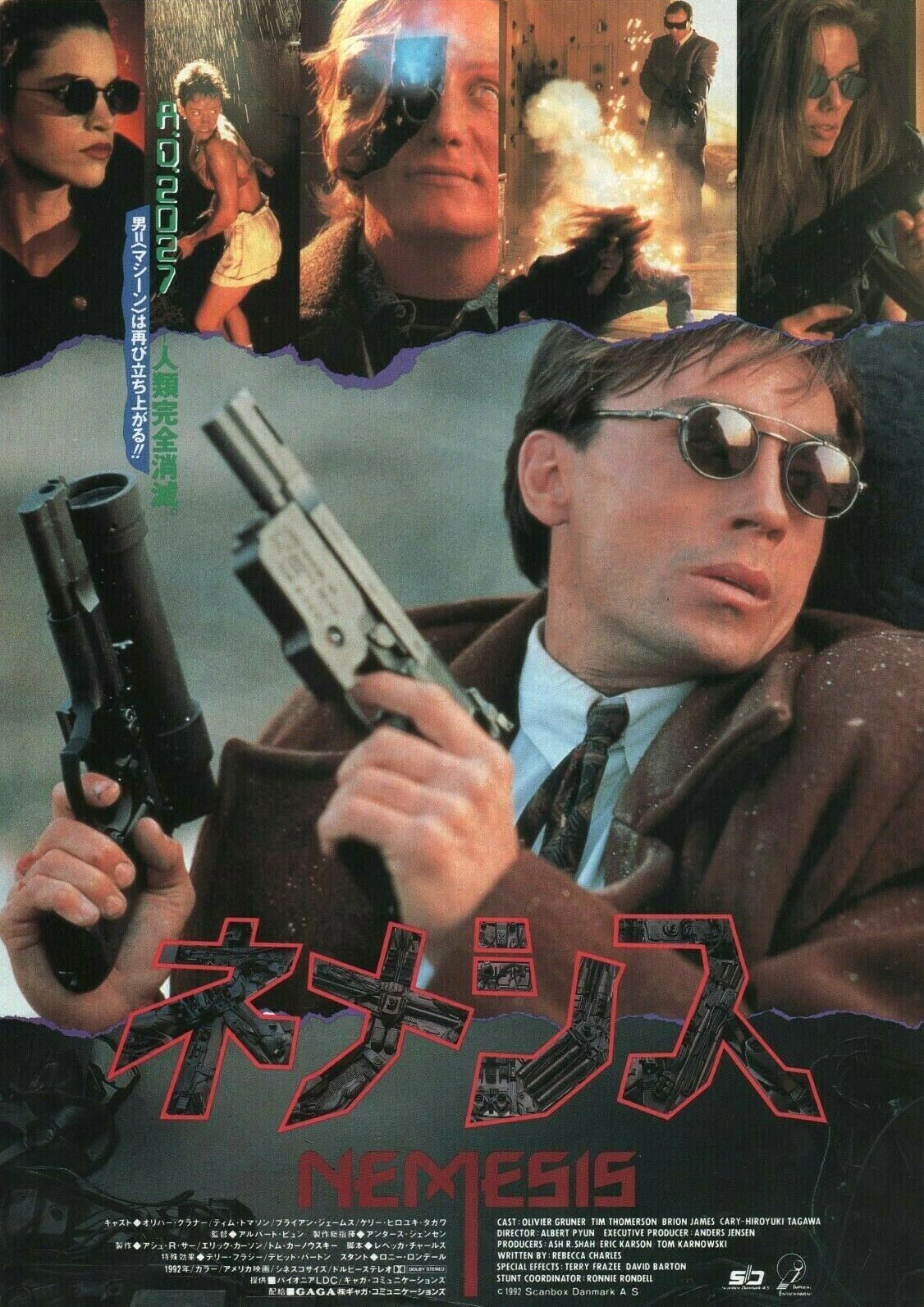
While games are a heavy visual medium, their influence on fashion in the cyberpunk genre has not been as significant as the film industry’s. Rather, most of the games in the cyberpunk genre are instead heavily referential of iconic films such as Blade Runner (1982). Rise of the Dragon (1990) and Snatcher (1994) both feature Deckard clones in terms of their protagonists’ designed outfits.


Deus Ex (2000) was an extremely well regarded game and spawned numerous sequels. A heavy Matrix (1999) inspiration can be identified in the protagonist, JC Denton’s long black coat, sunglasses and knee high boots outfit. 16 years later, Deus Ex: Mankind Divided (2016) was released featuring the main character in a very similar coat albeit with ACRNM, the logo of a techwear brand, attached to the collar. The later titles featured high quality graphics and impressive cybernetic augmentations on many of the characters, which reinforced the gothic references primarily derived from the Matrix and earlier Deus Ex titles.
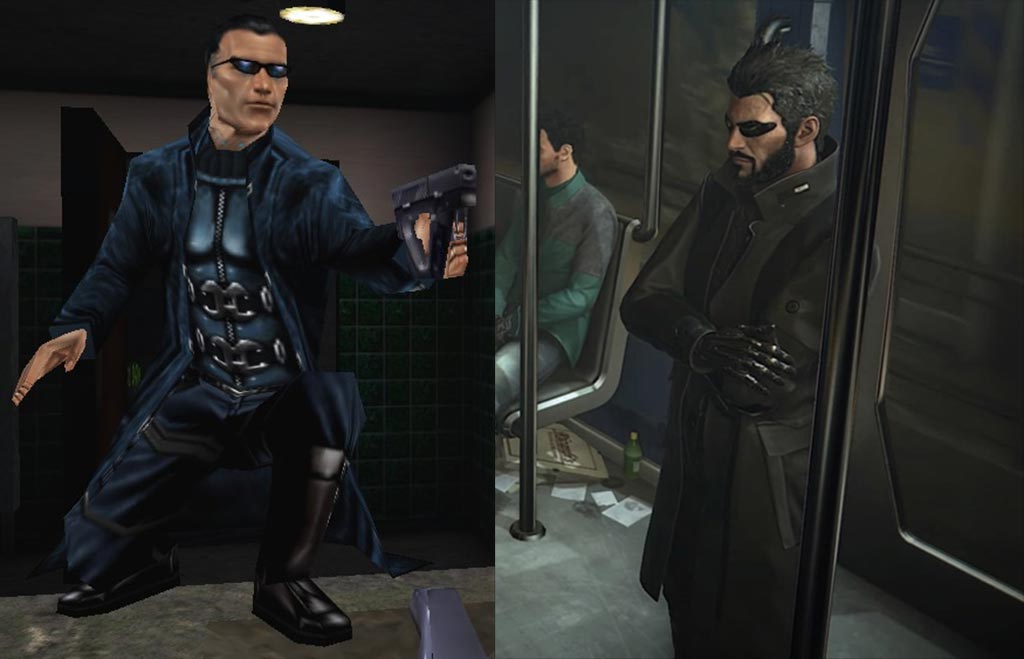
The “look” in the majority of cyberpunk video games can be summarised in a few categories. The first are literal Deckard clones, which includes the majority of the mystery type adventure games such as Snatcher (1994). The next include military combat uniforms, such as the Metal Gear series (1987 to 2018) where the original protagonist is a homage to Snake Pliskin from Escape from New York (1981) including his combat fatigues. The Ghost in the Shell games, aside from referencing their source material, typically fall into this military uniform trope. Then there are games like the Deus Ex series with JC Denton and Adam Jensen both being hybrids of the Matrix gothic style mixed with cybernetics and military hardware to provide an element of science fiction. Finally there are those like Shadowrun and Cyberpunk 2077 which again use futuristic military hardware and cybernetics but rooted firmly in a 80s and 90s street fashion base. None of these games really provide iconic looks that are definitive of the cyberpunk aesthetic but rather they use referential clothing to enhance the aesthetic of their own games, adding value to the cyberpunk aesthetic via attrition.
Despite not having a visual aspect to the medium, many cyberpunk novels feature extensive descriptions of clothing if not fashion. William Gibson in particular is well known for his extensive descriptions of clothing and fashion in his novels. I remember reading a chapter from Gibson’s Virtual Light, where the protagonist, Rydell, went on a shopping trip to a large mall/port called Container City where large freighters from around the world docked to unload inexpensive merchandise stored in shipping containers to a swarming hive of consumers. Rydell purchased a new outfit of cheap basics; I believe it was a burgundy bomber jacket and a few black tees and a pair of jeans. That imagery appealed to me somehow, and even though I was attempting similar looks years prior to reading that book, I still remember and feel influenced by that particular passage with its apt representation of the modern man’s relationship with his clothing and how it has manifested into a practical uniform for the 21st century.
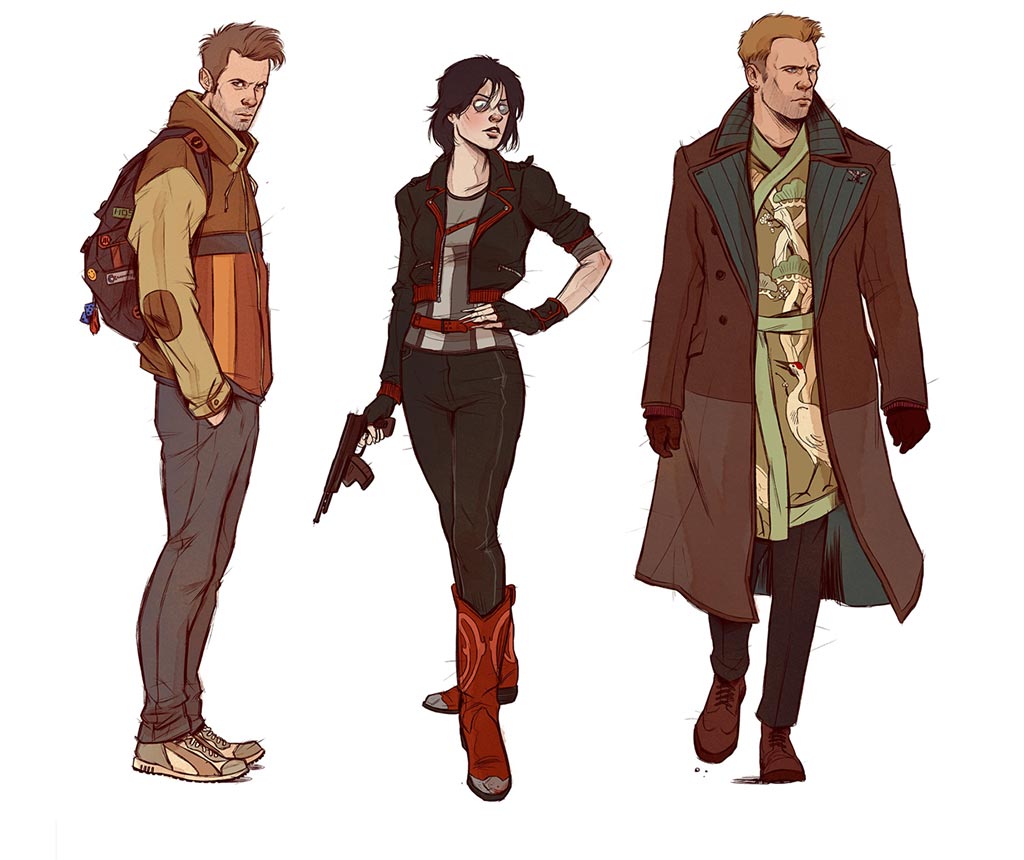
For his senior thesis project, Nathan Anderson, illustrated most of the significant character’s in Neuromancer (1984) and expanded this to Count Zero (1986) as well: LINK These outfits utilise subtle differences in the way that many cyberpunk film costumes have to illustrate a near future timeline and setting.
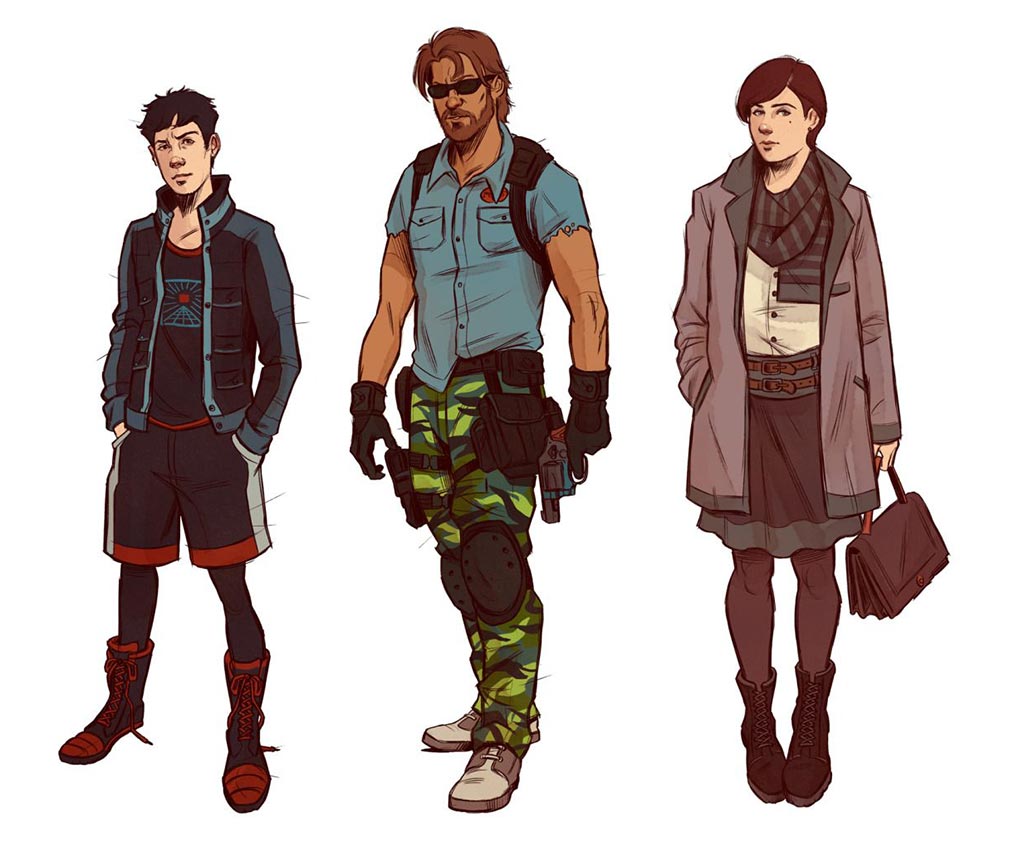
While a majority of the narratives in anime, manga and comics could be said to be relatively shallow, I would argue that some of the most iconic cyberpunk aesthetics can be found in this medium. Unfettered by the constraints placed on film costume designers such as conventional pattern making, budget or time, anime and manga illustrators can deliver more fantastic exaggerations in the designs worn by their characters and have them work more cohesively in their futuristic drawn environments.
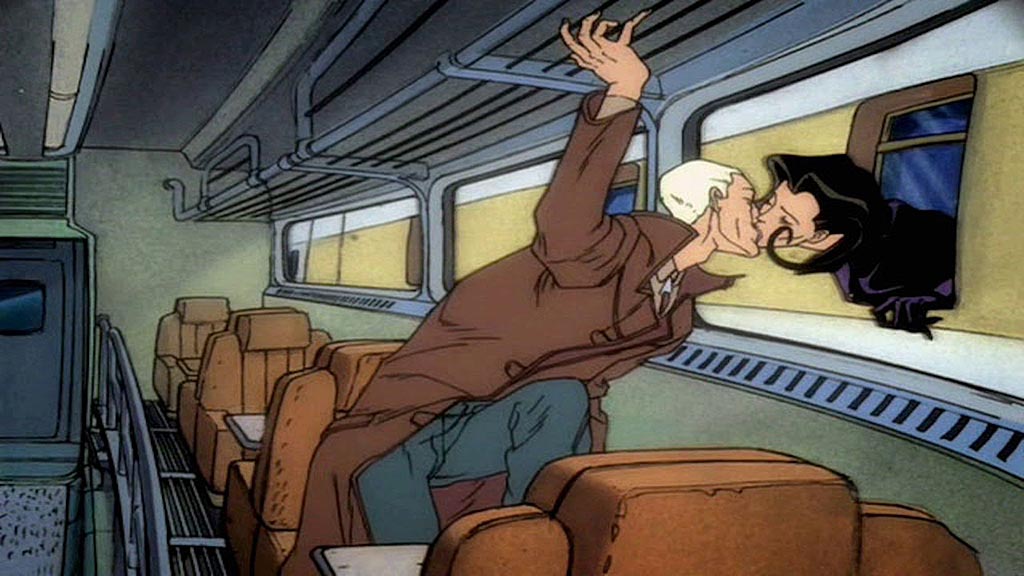
Ghost in the Shell’s (1995) is one of the most successful at creating an iconic cyberpunk fashion look for its characters and that is in my opinion linked to the same subtlety that made Blade Runner (1982) so iconic. Military pieces such as bombers and field jackets have minor tweaks including non-standard colours, more exaggerated collars, and an extra pocket or detail here and there. Despite this, the designs are still heavily inspired by earlier titles, in the case illustrated below: Akira (1988). Akira’s own looks take from the Japanese biker scene in the 1980’s, specifically from makers such as Kadoya, which you can read more about in this Shellzine article: LINK. Aeon Flux (1991) with its heavy use of latex and form fitting costumes or bare skin was a large inspiration for certain looks in the Matrix (1999) and it too uses Deckard’s iconic looks and its own subtle modifications to entrench itself in the cyberpunk aesthetic.
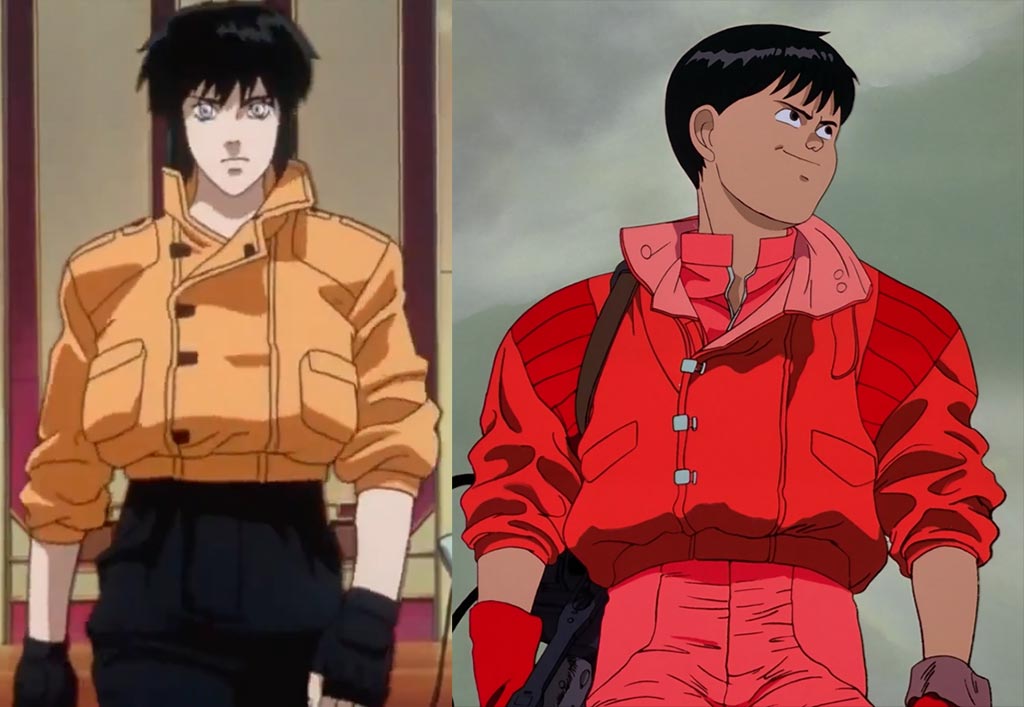
The cyberpunk aesthetic is a mixture of film noir, gothic and 80’s to 90’s casual fashions, using garments that often feature subtle exaggerations or deviations in silhouette and materials; further accessorised with futuristic military hardware if not cybernetic prosthetics that place the character in a near future sci-fi setting. If we remove the holster, futuristic blaster gun and the flying car from Deckard’s arsenal, he would look like a downtrodden 40’s film noir detective. If we took away Kaneda’s laser gun, he would be just some kid wearing an 80’s leather Kadoya biker suit. Cyberpunk media looks are defined by subtle exaggerations of existing clothing archetypes rather than the fantastic, often alien, costumes as you would expect from the looks provided in far-future set science fiction titles. It is safe to say that many of the looks prevalent in cyberpunk media rely on props to reinforce a science fiction aesthetic. I will argue that this is actually a good thing, as it will be the props that take a cyberpunk aesthetic into cosplay territory. This leaves the remaining tropes to be referenced in contemporary fashion outfits without looking like one is playing dress up.
4. Recurring Components in Cyberpunk Fashion
Based on the media analysis of aesthetic fashion tropes in cyberpunk above, a number of recurring styling and garment components can be clearly identified. Below, each component of an outfit can be broken down into frequently referenced garment types and styling cues. These can be used to create your own looks that embody the cyberpunk media-inspired fashion aesthetic.
4.1 Outerwear
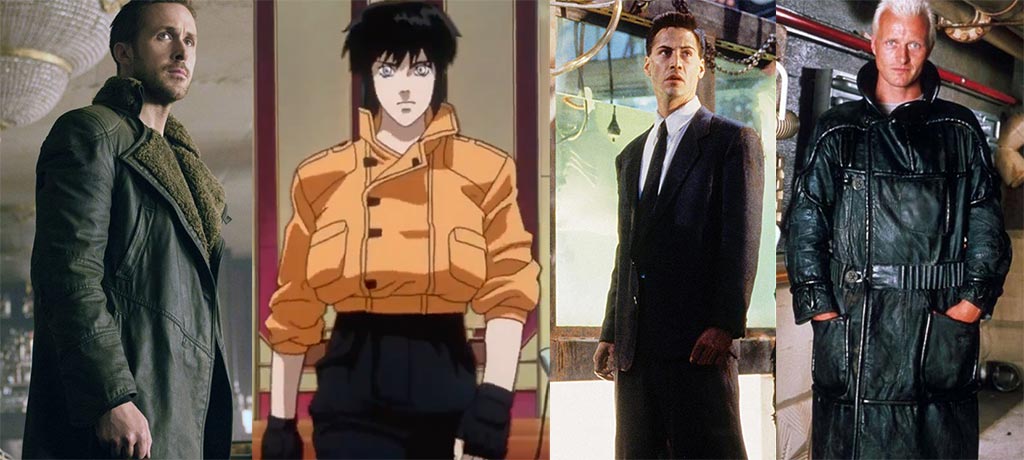
Typical Outer Types:
- Long Coats
- Bomber / Cropped Jackets
- Field Jackets
- Blazers / Suit jackets
- Transparent PVC Raincoats (women)
Styling Notes:
- Bunching sleeves above the forearm
- Popped collars
Common Details:
- High collars
- Fleece collars/lining
- Strong shoulder padding and dropped shoulders
- One or two extra straps/pockets (not excessively so)
- Weathered textiles
- Typical Materials:
- Cotton/Blends
- Wool
- Leather
- Faux Leather
- Fleece
- Vinyl
- Typical Outer Colours:
- Black, red, brown, white, beige, muted neutrals
4.2 Tops
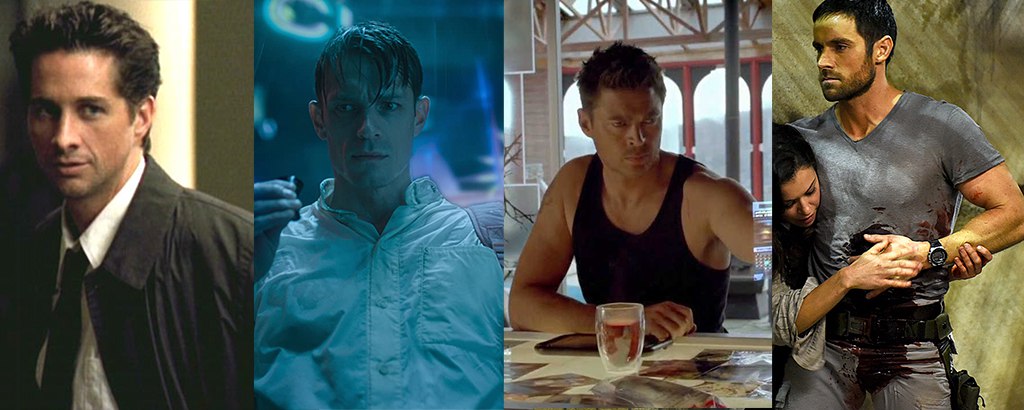
Typical Tops Types:
- Mandarin Collar Shirts
- Button Shirts
- Short Sleeve Button Ups
- Boxy Plain Tees
- Sleeveless Tees
- Tanks
Styling Notes:
- Button shirts are typically styled with a tie as in Akira (1988), Snatcher (1994) and Total Recall 2070 (1999)
- Mandarin collar shirts are typically layered under jackets as in the Matrix (1999), Akira (1988) and Aeon Flux (1991)
- Tees, tanks and button shirts are typically tucked in
Common Details:
- Boxy cuts
- Typical Top Materials:
- Cotton
- Synthetic
- Typical Top Colours:
- White, Pastels, Dark Muted Neutrals, Black
4.3 Bottoms
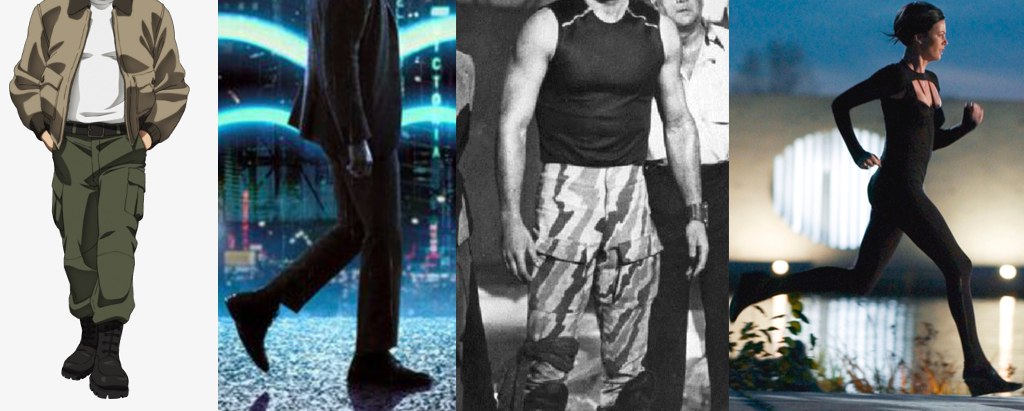
Typical Bottoms Types:
- Slim fit Casual Pants
- Trousers (separates or as part of suits)
- Cargo Pants
- Leggings/tights (Women)
Styling Notes:
- Pants are rarely cropped aside from Akira (1988) and Mute (2018), most have a longer inseam and are draped over or tucked into footwear
Common Details:
- Slim and straight cuts for men; form-fitting for women
- Typical Bottoms Materials:
- Cotton
- Wool
- Synthetic (Spandex)
- Typical Bottoms Colours:
- Black, Green Camouflage, Grey, Muted Neutrals, White
4.4 Footwear

Typical Footwear Types:
- Boots of various styles:
- Jungle and combat boots
- Biker and Engineer boots
- Cowboy boots
- Nondescript sneakers
Styling Notes:
- Pants can be tucked in to the boot as in Hardware (1990) or the pant leg can drape over the boot shaft as in Blade Runner 2049 (2017)
Common Details:
- Rarely flashy, footwear is often very subdued and more emphasis is placed on the outer and the wearer
- Typical Footwear Materials:
- Leather
- Typical Footwear Colours:
- Black, Brown, Red, White
4.5 Accessories
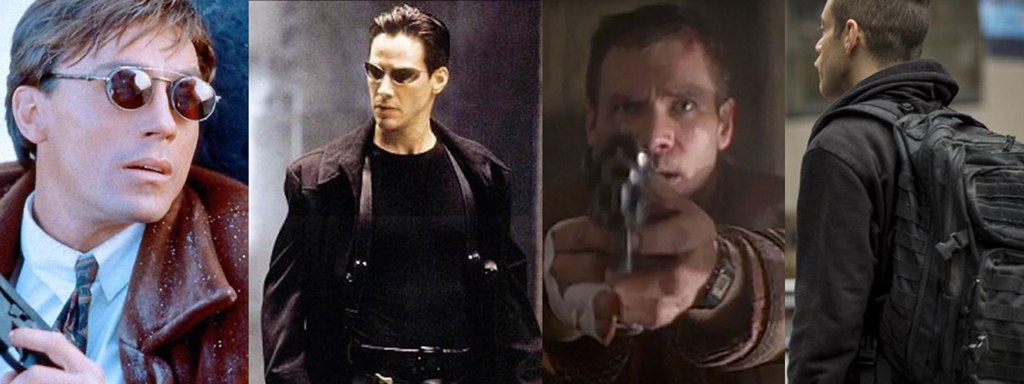
Typical Accessory Types:
- Black Sunglasses
- Holsters
- Tactical Vests
- Backpacks
- Military Duffel Bags
- Digital Watches
Styling Notes:
- Worn sparingly, perhaps one or two pieces maximum per outfit
Common Details:
- A majority of the accessories are modern tactical (1980s+) in design
- Despite the “mirror shades” trope in cyberpunk fiction, sunglasses are predominantly black in visual cyberpunk media
- Typical Footwear Materials:
- Nylon, Leather, Plastic
- Typical Accessory Colours:
- Black, Olive Drab, Grey
5. Dressing Cyberpunk in 2021
So you live in 2021, you’ve enjoyed various cyberpunk media from Blade Runner to Neuromancer or perhaps you even feel inspired by the rebellious “high tech low life” ideology. Luckily there are, for all intents and purposes, a limitless supply of clothing at all price points that can work to reference the fashion themes outlined in the previous section.I feel that there is plenty of room to manoeuvre within the guidelines to accommodate a wide variety of lifestyles, brands, personal taste preferences, and context requirements. The goal is to create your own cyberpunk-inspired style and not simply emulate a costume.
I put together the following outfits for this article as my own personal interpretation of dressing cyberpunk in 2021. I shot these looks on my roof, with no dramatic backgrounds, no rendered science fiction imagery, so they could stand on their merits in terms of inspiration and stylistic referencing. All were worn with Danner Tachyons, a lightweight and versatile jungle boot that I feel fit the aesthetic. As someone who lives an active lifestyle and commutes on foot daily through urban environments, I aim to dress for practicality by blending the techwear perspective with the cyberpunk references that I am inspired by. These looks are not prescriptive but rather just examples of how I would apply the fashion components prior identified.
5.1 Look 1
With a high collar, cropped, boxy jacket inspired by one of Batou’s and Aeon Flux’s jackets, and a Mandarin collared overshirt that I’ve referenced from Neo’s tops in The Matrix trilogy, I felt this was a good example of subtle styling without crossing into cosplay territory. The extra pockets and details are evident but not excessive in a way that overpowers the look. The cotton membrane outer has taken on a slight patina, providing a “lived-in” weathering that I feel fits in with the genre trope.
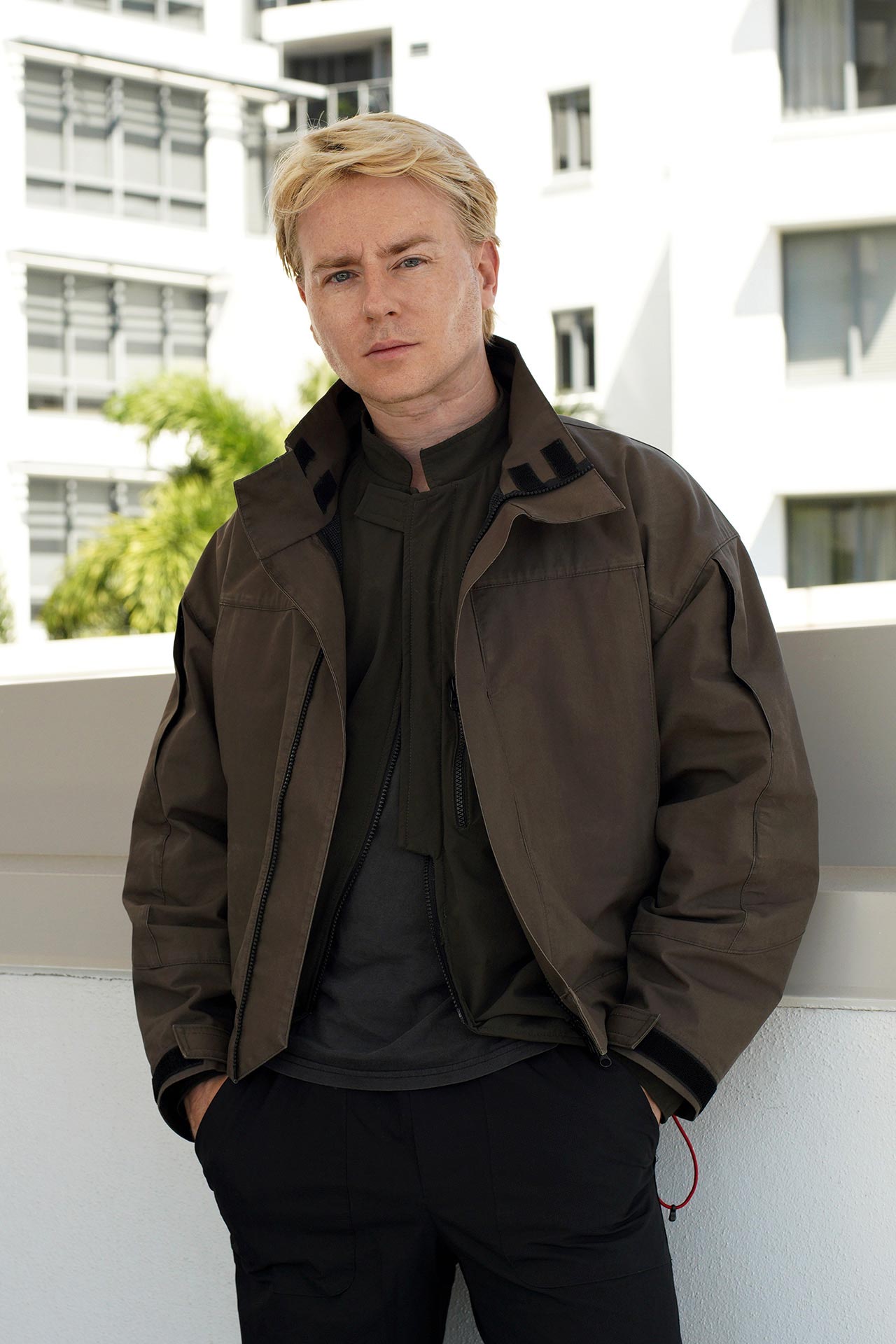
Details:
- ROSEN-X Aeon Jacket
- ROSEN-X Minerva Overshirt (Gen 1)
- Cotton Tank Top
- ROSEN-X Yama Pant (Gen 1)
5.2 Look 2
A long protective trench coat in water-resistant laminated nylon, with a dimpled texture and subtle tactical details is paired over a worn, faded black t-shirt, styled tucked in, to casual cotton pants. The look is accessorised with a military digital watch, tactical backpack and a holster bag. I wear similar iterations of this look regularly and it’s part of what I’d consider my personal style. Inspiration-wise I feel it’s a blend of Deckard’s look from Blade Runner with some of the various military casual looks from the Ghost in the Shell series.

Details:
- ROSEN-X Triton Coat (Gen 1)
- ROSEN Plato Trousers in Tech Cotton
- Casio G-8000
- Condor Failsafe Elite
- Holster Bag
- Cotton Tee
5.3 Look 3
While the above two look predominantly feature pieces from my partner’s made to order techwear label, ROSEN-X, I put this together just from random, budget pieces I had lying around to try and create a similar amalgamation of my personal active style and cyberpunk fashion references. A surplus long coat in vinyl that I got for $5, a pair of polyester Nike track pants and a cotton tee that I chopped the sleeves off are accessorised by a $15 Uniqlo waist bag, a modified $10 Casio and some headphones. I feel that it still conveys the cyberpunk image and retains practicality without using expensive designer pieces.
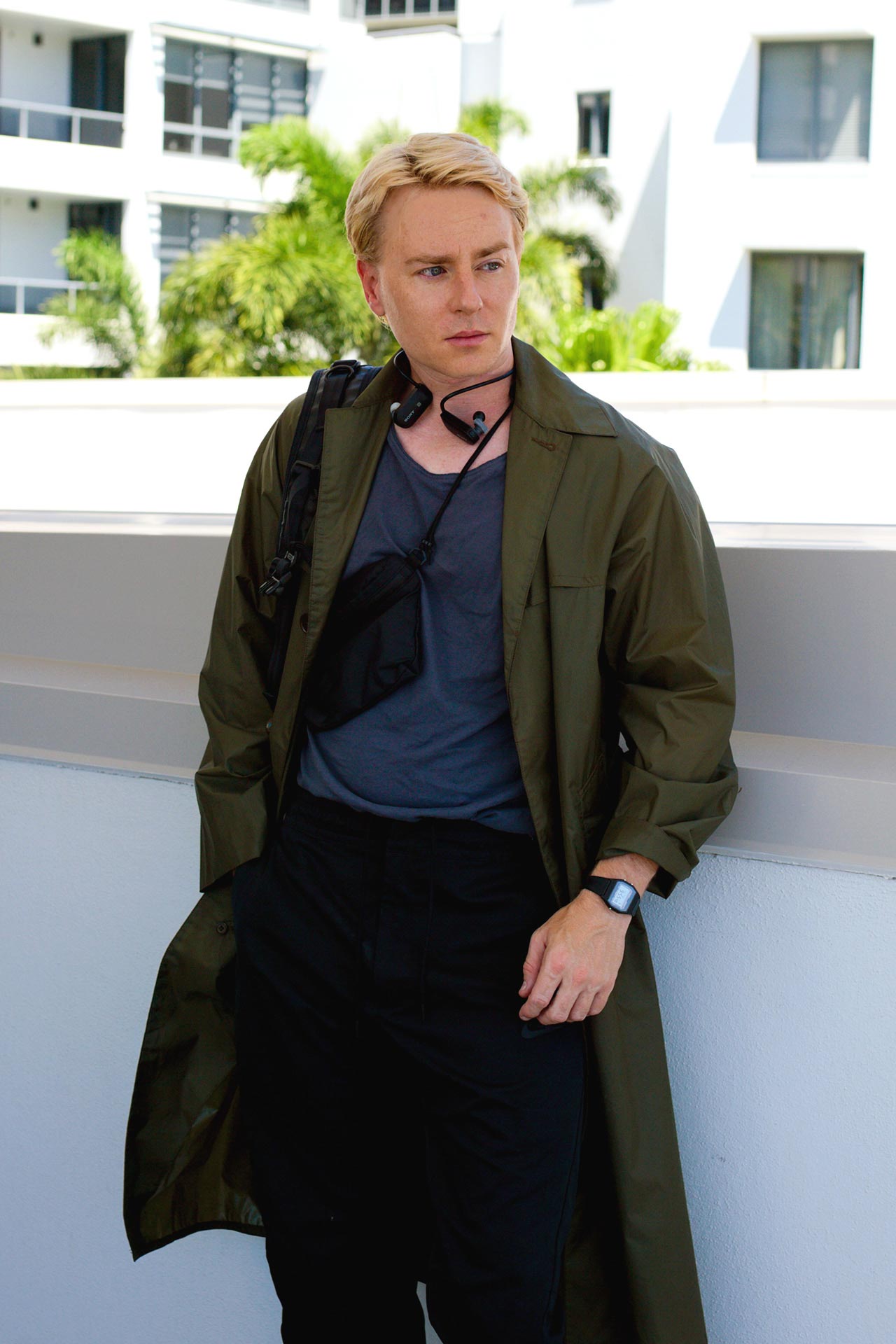
Details:
- 1965 Australian Defence Force Rain Coat
- Cotton Tank Top
- Uniqlo Lightweight Waist Bag
- Casio F-84W with Clear Screen Mod (Shellzine Guide)
- Nike Tech Joggers
- Sony SMART B Trainer
5.4 Archive of Previous Cyberpunk-Inspired Looks
Over the years I’ve taken photos of dozens of outfits, many of them inspired by cyberpunk references. A few of my favourites are below. If you like these kinds of outfits, I do try to regularly post portraits and looks that feature my styling and coordination preferences on my Instagram and Tumblr.
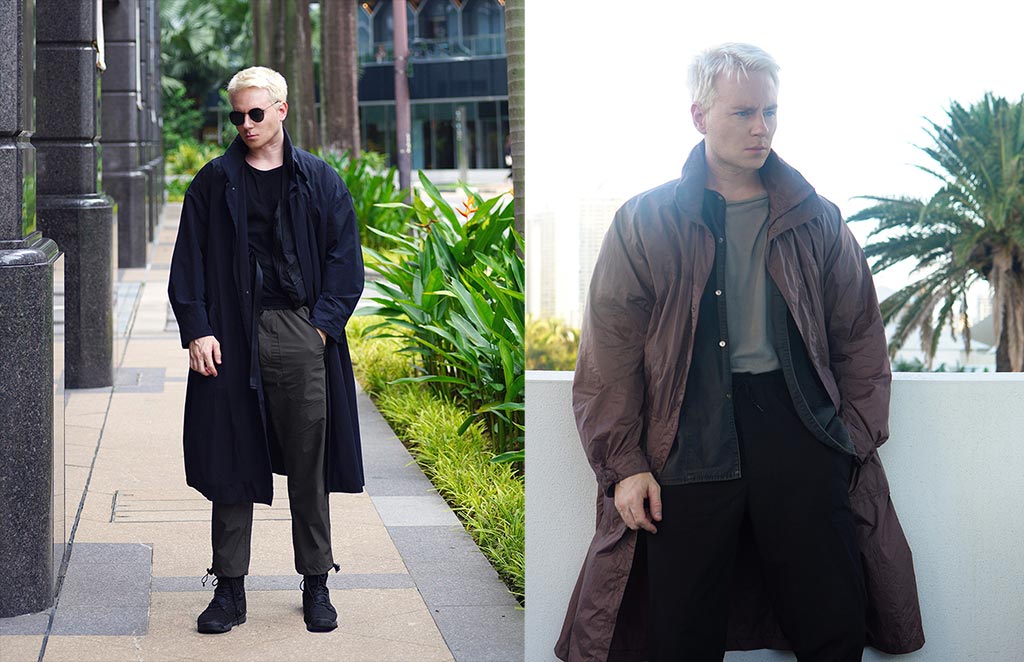

Fair Use Statement: This article contains images hosted without express permission from their copyright holders. These images are provided for illustration purposes to support an informational objective. This should constitute fair use of any such copyrighted material.
If you enjoyed this article, supporting SHELLZINE by any amount can be made via the link below. Your contribution is completely optional and all funds help cover the website’s growing hosting costs and enable further original content creation without the use of advertisements. Secure payments by all major card types, including Google Pay and Apple Pay, are supported.

